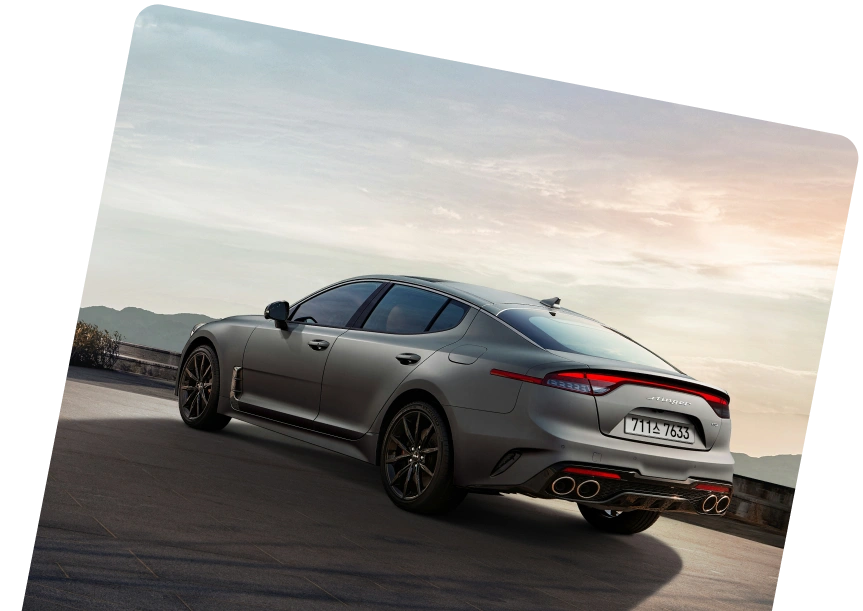Even though manual cars still rule the roads in Britain, automatic gearboxes have been gaining popularity over the years. But which one is the better choice? We’re here to clear up the confusion around manual vs. automatic.
Let’s break down the pros and cons so you can choose the transmission that fits your driving style and needs.

Understanding the Basics of Transmission Types
A car’s transmission is what transfers power from the engine to the wheels and allows the vehicle to move. There are two main types: manual and automatic.
What Is a Manual Car?

A manual car is one where you change gears yourself using a clutch pedal and gear stick.
- Unlike an automatic, which shifts gears for you, a manual gives you precise control over when and how you change gears.
- Many drivers prefer manual vehicles for the more connected driving experience they offer.
- They’re becoming less common, but they’re still valued for their fuel efficiency and the sense of control they provide on the road.
What Is an Automatic Car?

An automatic car changes gears on its own, so you don’t need a clutch, and there’s nothing to shift manually.
- Choosing an automatic car means that the transmission switches gears for you as you drive. These vehicles are simpler and smoother to operate.
- Automatic gearboxes are especially convenient in city traffic because you only need to use the accelerator and brake.
- They’re becoming more popular because they’re easy to drive. These days, they’re also very efficient, thanks to the technology in modern vehicles.
Comparing Manual and Automatic Transmissions
One of the biggest choices when getting a car is deciding between a manual or an automatic. It all comes down to personal preference.
Key Differences Between Manual and Automatic Cars
Here’s how manual and automatic gearboxes compare:
- Shifting gears – In a manual, you change gears yourself using a clutch and gear stick. In an automatic, the car does it for you.
- Clutch control – Manuals have a third pedal (the clutch), which you press when shifting gears. An automatic car doesn’t have one, which makes it easier to drive.
- Ease of driving – Automatics are simpler and less tiring, especially in rush hour traffic. Manuals take more effort and coordination.
- Fuel use – Older automatics use more fuel, but newer ones are often just as efficient or even better than their manual counterparts.
- Control and performance – Manuals give more control, which many driving enthusiasts prefer. Automatic gearboxes focus on comfort and convenience.
- Learning to drive – Manuals take more practice to master, and automatic cars are quicker to learn.
- Cost and maintenance – Automatics usually cost more to buy and repair. Manual gears are often cheaper to maintain.
Driving Experience: Engagement vs. Convenience
With a manual car, you’re in full control of when and how the car changes gears. Every time you speed up or slow down, you have to dip the clutch, shift gears, and time it just right. It takes more skill. But for many keen drivers, it makes the car feel like an extension of themselves, especially on twisty roads where they can really feel the power of the car.
An automatic car, on the other hand, does all the shifting for you. You just press the accelerator to go and the brake to stop. This makes driving easier and smoother, especially in slow-moving traffic where constantly shifting gears in a manual gets tiring.
Advantages and Disadvantages of Manual Cars
Consider this if you’re thinking about choosing a manual gearbox:
Pros | Cons |
|
|
Advantages and Disadvantages of Automatic Cars
Here’s what you should know about an automatic gearbox:
Pros | Cons |
|
|
Additional Considerations When Choosing a Transmission
You might still have a few questions about which transmission is right for you. Let’s go over some key points to help clear things up.

Are Manual Cars More Fuel-Efficient Than Automatics?
It used to be true that manual cars helped conserve fuel. This was because older automatic gearboxes weren’t very efficient.
However, newer automatic cars have improved considerably. Thanks to their advanced technology, they now shift gears more smoothly and at the best time for fuel economy. Some even come with stop-start systems, which turn the engine off when the car isn’t moving (like at a red light) and restart it as soon as you touch the accelerator.
Is It Easier to Learn to Drive an Automatic Car?
Yes. Driving an automatic is much easier to learn because the car changes gears for you. You can focus on steering, braking, and watching the road without worrying about stalling or shifting at the right time.
In a manual, you have to use a clutch pedal, and change gears yourself, which takes practice.
If I Learn in an Automatic, Can I Drive a Manual?
No, if you pass your driving test in an automatic car, your licence will only allow you to drive automatics. To legally drive a manual car, you’ll need to take another test in a manual vehicle. This rule exists because manual cars require extra skills.
Are Manual Cars Cheaper to Insure?
In many cases, yes. Manual cars generally cost less to repair and maintain. Automatic gearboxes are more complex, and if something goes wrong, fixing or replacing them can be expensive. Additionally, luxury or high-performance cars are often automatic.
However, your driving history, age, and the car’s overall value also influence insurance costs for both manual and automatic cars.
Manual vs. Automatic in Different Countries
The popularity of manual and automatic gearboxes varies worldwide:
- In Europe and South America, manual cars are the norm, which makes them the most common and affordable rental option.
- In India and Africa, manuals are more common due to their affordability and ease of maintenance.
- In North America, Australia, and parts of Asia, automatic cars dominate. Japan also favours automatic transmission cars, especially in urban areas, though some rural drivers still prefer manuals.
Future of Manual and Automatic Cars
The way we drive is changing, and so is the technology behind our cars. Cars with manual gearboxes are becoming less common. But will they disappear completely, or will they still have a place on the road?

Will Manual Cars Be Phased Out?
The government is moving forward with its plan to stop selling new petrol and diesel cars, and some want the deadline pushed up to 2032.
With more people choosing electric and hybrid cars — which don’t have traditional gearboxes — manual transmission cars could become a thing of the past. Some experts believe they could disappear from UK roads within the next decade. Luxury brands like Ferrari and Porsche have been phasing out manuals for years, and now even everyday cars like the Ford Fiesta and Volkswagen Polo offer more automatic vehicle options.
Looking even further ahead, as driverless technology grows, manual gearboxes may eventually vanish altogether.
Carplus: Making Your Car Choice Easier
Choosing between a manual and an automatic for your next vehicle? No problem — Carplus helps you finance the car that fits your style. With flexible loan options like Hire Purchase and Personal Contract Purchase, we make it easy to spread the cost over time. It doesn’t matter what you’re after; Carplus offers competitive rates and quick approvals so you can get behind the steering wheel as soon as possible.
Conclusion: Which Transmission Is Better?
The best choice is the one that feels right for you. If you drive a lot in the city, an automatic makes things simpler; there’s no clutch or constant gear shifting, just a smooth ride. It’s also a good option for people with limited mobility since it’s easier to handle.
On the other hand, if you enjoy driving and like being in full control, a manual might be the better fit. But don’t make your choice based on whether it’s a manual or automatic car alone. A good car is much more than that.








